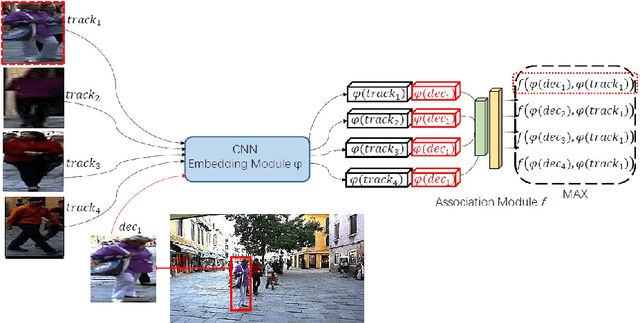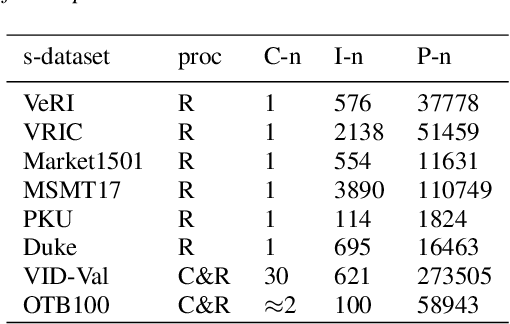Guanxian Chen
A Generic Object Re-identification System for Short Videos
Feb 10, 2021



Abstract:Short video applications like TikTok and Kwai have been a great hit recently. In order to meet the increasing demands and take full advantage of visual information in short videos, objects in each short video need to be located and analyzed as an upstream task. A question is thus raised -- how to improve the accuracy and robustness of object detection, tracking, and re-identification across tons of short videos with hundreds of categories and complicated visual effects (VFX). To this end, a system composed of a detection module, a tracking module and a generic object re-identification module, is proposed in this paper, which captures features of major objects from short videos. In particular, towards the high efficiency demands in practical short video application, a Temporal Information Fusion Network (TIFN) is proposed in the object detection module, which shows comparable accuracy and improved time efficiency to the state-of-the-art video object detector. Furthermore, in order to mitigate the fragmented issue of tracklets in short videos, a Cross-Layer Pointwise Siamese Network (CPSN) is proposed in the tracking module to enhance the robustness of the appearance model. Moreover, in order to evaluate the proposed system, two challenge datasets containing real-world short videos are built for video object trajectory extraction and generic object re-identification respectively. Overall, extensive experiments for each module and the whole system demonstrate the effectiveness and efficiency of our system.
MOTS: Multiple Object Tracking for General Categories Based On Few-Shot Method
May 19, 2020



Abstract:Most modern Multi-Object Tracking (MOT) systems typically apply REID-based paradigm to hold a balance between computational efficiency and performance. In the past few years, numerous attempts have been made to perfect the systems. Although they presented favorable performance, they were constrained to track specified category. Drawing on the ideas of few shot method, we pioneered a new multi-target tracking system, named MOTS, which is based on metrics but not limited to track specific category. It contains two stages in series: In the first stage, we design the self-Adaptive-matching module to perform simple targets matching, which can complete 88.76% assignments without sacrificing performance on MOT16 training set. In the second stage, a Fine-match Network was carefully designed for unmatched targets. With a newly built TRACK-REID data-set, the Fine-match Network can perform matching of 31 category targets, even generalizes to unseen categories.
 Add to Chrome
Add to Chrome Add to Firefox
Add to Firefox Add to Edge
Add to Edge